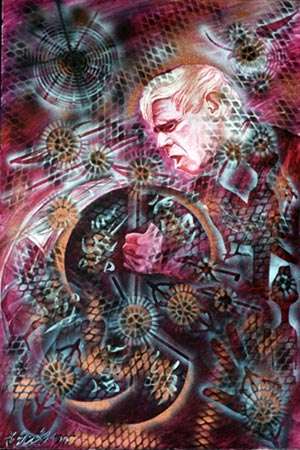Joska Soos once sent me an invitation leaflet in which he mentioned that the popular name for shamanism, as he knew it from growing up in a the shaman clan Bacsa, was Táltos. A Táltos is different from a regular shaman.
Joska Soos was in every regard a Táltos, (see Wikipedia's definition below).
Joska Soos was born with the entire caul intact. As a child he was taken in the care of the local shaman to be educated in the shamanic practices. He was able to go into altered states of consciousness. Although he used a couple of sound instruments, he would always talk about "traveling without moving". In other words, he could go directly into altered states without rituals, dancing and son. The shamans in his clan were all tending and breeding horses.
